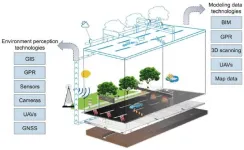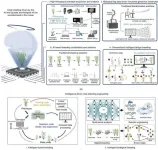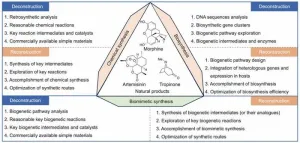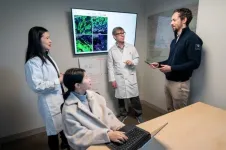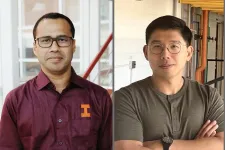New insights into drug addiction: The role of astrocytic G protein-coupled receptors
2025-03-02
(Press-News.org)
A recent study published in Engineering delves into the complex mechanisms of drug addiction, highlighting the crucial role of astrocytic G protein-coupled receptors (GPCRs). This research offers fresh perspectives on understanding and potentially treating substance-use disorders (SUDs).
For a long time, neuroscience research on drug addiction mainly focused on neuronal mechanisms. However, emerging evidence shows that astrocytes, the most abundant glial cells in the central nervous system, also play a significant part. Astrocytes are not just passive supporters of neurons; they actively regulate synaptic transmission and neural network functions.
The study specifically examines two types of GPCRs expressed on astrocytes: dopamine D1 receptors (D1R) and metabotropic glutamate receptor 5 (mGLUR5). These receptors respond to various ligands, modulating astrocytic signaling and, in turn, influencing adjacent neurons and their circuitry.
mGLUR5 expression in astrocytes peaks during early development and then declines in adulthood. Despite its low levels in adults, it remains functional. In the context of SUDs, although there are no direct studies on astrocytic mGLUR5, evidence from related research suggests that it may be involved in regulating cue-associated drug memories. For example, genetic deletion or pharmacological inhibition of mGLUR5 generally reduces drug-seeking and -taking behaviors.
D1R, on the other hand, has been detected in multiple brain regions, including the nucleus accumbens (NAc). In NAc astrocytes, D1R-mediated signaling is complex. Activation of astrocytic D1R-IP3 signaling leads to adenosine release, which decreases glutamatergic transmission to NAc medium spiny neurons. Mice lacking functional astrocytic IP3R2 or D1Rs show attenuated behavioral sensitization to amphetamine, indicating the role of astrocytic D1Rs in drug-induced neuroplasticity.
These findings about astrocytic GPCRs in drug addiction are significant. They not only enhance our understanding of the cellular mechanisms underlying SUDs but also open up new possibilities for developing more targeted therapeutic approaches. As technology continues to advance, further research can explore the precise functions of these receptors in different brain regions and how they interact with other cellular components. This could potentially lead to the development of drugs that specifically target astrocytic GPCRs, offering hope for more effective treatment of drug addiction in the future.
The paper “Astrocytic G Protein-Coupled Receptors in Drug Addiction,” authored by Alexander K. Zinsmaier, Eric J. Nestler, Yan Dong. Full text of the open access paper: https://doi.org/10.1016/j.eng.2024.12.016. For more information about the Engineering, follow us on X (https://twitter.com/EngineeringJrnl) & like us on Facebook (https://www.facebook.com/EngineeringJrnl).
END
[Attachments] See images for this press release:
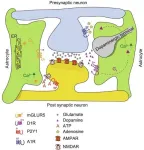
ELSE PRESS RELEASES FROM THIS DATE:
2025-03-02
A recent study published in the journal Engineering delves into the potential of digital twin (DT) technology in revolutionizing road engineering and its lifecycle applications. As road infrastructure worldwide faces the challenge of digitalization, DT has emerged as a promising solution.
The research, conducted by a team of scholars from Tongji University and Harbin Institute of Technology (Shenzhen), systematically reviews DT-enabling technologies, including model creation, condition sensing, data processing, and interaction. The development of DT in road engineering has been ...
2025-03-01
A new study published in Engineering explores how next-generation artificial intelligence (AI) and big data are revolutionizing crop breeding, with potential far-reaching implications for global food security.
Crop breeding has come a long way, evolving through distinct stages from domestication breeding to the current era of big data intelligent design breeding. The latest stage, “Breeding 4.0,” integrates biotechnology, big data, and AI. This convergence aims to achieve efficient, personalized breeding of new crop varieties, marking a significant shift from traditional “scientific” ...
2025-03-01
In a recent publication in Engineering, researchers from Jinan University in China and the University of Illinois Chicago in the US presented an in-depth perspective on the biomimetic synthesis of natural products. This research area, which bridges chemistry, biology, and pharmacy, has seen significant progress in recent years.
Natural products are crucial in drug discovery, providing essential scaffolds for developing new medications. However, obtaining sufficient quantities of these compounds for research and production is challenging due to resource limitations. Traditional chemical synthesis and biosynthesis methods also face their own set of ...
2025-03-01
Tokyo, Japan – A team led by a member of Tokyo Metropolitan University have made advances in the search for dark matter, observing galaxies using new spectrographic technology and the Magellan Clay Telescope. With a mere 4 hours of observations, precise measurements in the infrared range have set new limits on the lifetime of dark matter. Their findings highlight the crucial utility of their technology and extend the search to less explored parts of the spectrum.
Over the past century, cosmologists have grappled with an apparent inconsistency in what they saw in the universe. Observations of the rotation of galaxies, for example, imply that there is a lot of mass out ...
2025-02-28
WASHINGTON– The Society for Cardiovascular Angiography & Interventions (SCAI) today expressed profound disappointment in the American Board of Medical Specialties (ABMS) decision to deny the creation of the American Board of Cardiovascular Medicine (ABCVM).
The ABCVM was proposed by SCAI, the American College of Cardiology (ACC), the American Heart Association (AHA), the Heart Failure Society of America (HFSA), and the Heart Rhythm Society (HRS) as a necessary step to establish cardiology as its own distinct medical specialty, separate from internal ...
2025-02-28
In the race to meet the growing global demand for lithium — a critical component in batteries for electric vehicles — a team of researchers from Rice University’s Elimelech lab has developed a breakthrough lithium extraction method that could reshape the industry.
In their study published in Science Advances, the researchers demonstrated near-perfect lithium selectivity by repurposing solid-state electrolytes (SSEs) as membrane materials for aqueous lithium extraction. While originally designed for the rapid conduction of lithium ions in solid-state batteries — where there are no other ions or liquid solvents — the highly ordered and confined structure ...
2025-02-28
American Board of Cardiovascular Medicine Chair Jeffrey Kuvin, MD, issued the following statement in response to the American Board of Medical Specialties denial of an independent board for cardiology:
“We are deeply disappointed with the American Board of Medical Specialties’ decision not to approve the American Board of Cardiovascular Medicine as a new, independent board for cardiology.
The decision ignores the evolution of cardiovascular medicine into its own distinct medical specialty, separate from the field of internal medicine, requiring its own set of knowledge, skills, and competencies to sustain professional excellence and effectively ...
2025-02-28
Neuroblastoma is a solid tumor that occurs in children. When high-risk, the disease has a poor prognosis. Decades ago, adding the drug retinoic acid to neuroblastoma treatment increased survival by 10-15%. However, this effect was only evident in post-chemotherapy consolidation after bulky primary tumors had largely been eliminated. Why retinoic acid is effective in this setting but not against primary tumors, has been speculated about for nearly 50 years. St. Jude Children’s Research Hospital scientists resolved the mystery in a new study, showing retinoic acid uses a novel mechanism to kill metastasized neuroblastoma. The drug “hijacks” ...
2025-02-28
COLUMBUS, Ohio – Novel technology intends to redefine the virtual reality experience by expanding to incorporate a new sensory connection: taste.
The interface, dubbed ‘e-Taste’, uses a combination of sensors and wireless chemical dispensers to facilitate the remote perception of taste – what scientists call gustation. These sensors are attuned to recognize molecules like glucose and glutamate — chemicals that represent the five basic tastes of sweet, sour, salty, bitter, and umami. Once captured via an electrical signal, that data is wirelessly passed to a remote device for replication.
Field ...
2025-02-28
URBANA, Ill. – Nanozymes are synthetic materials that have enzyme-like catalytic properties, and they are broadly used for biomedical purposes, such as disease diagnostics. However, inorganic nanozymes are generally toxic, expensive, and complicated to produce, making them unsuitable for the agricultural and food industries. A University of Illinois Urbana-Champaign research team has developed organic-material-based nanozymes that are non-toxic, environmentally friendly, and cost effective. In two new studies, they introduce ...
LAST 30 PRESS RELEASES:
[Press-News.org] New insights into drug addiction: The role of astrocytic G protein-coupled receptors

